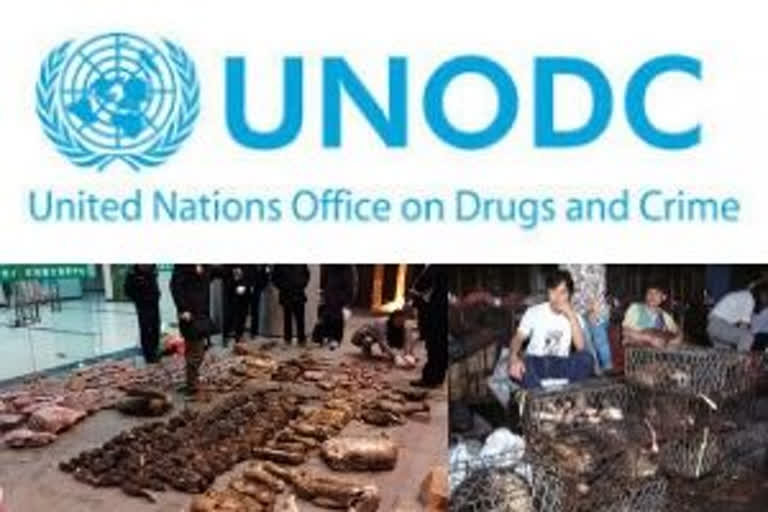Vienna (Austria): The World Wildlife Crime Report 2020 by the United Nations Office on Drugs and Crime (UNODC) underlines threat wildlife trafficking poses to nature and biodiversity of the planet. The report talks about trafficking of some wild species, pangolins, birds, turtles, tigers, bears among others. It says, the transmission of zoonotic disease increases when wild animals are poached from their natural habitat, butchered and sold illegally.
Zoonotic diseases represent up to 75 per cent of all emerging infectious diseases and include SARS-CoV-2 that caused the COVID-19 pandemic.
The end product offered for human consumption involves greater risks of health ailments as trafficked species escape any hygiene or sanitary control.
The report notes that pangolins, which were identified as a potential source of coronaviruses, are the most trafficked wild mammals in the world, with seizures of pangolin scales having increased tenfold between 2014 and 2018.
Also read: WHO praises efforts to contain COVID-19 in Dharavi
The report majorly talks about UNODC’s World WISE database, which contains almost 180,000 seizures from 149 countries and territories. The database shows that nearly 6,000 species have been seized between 1999-2019, including not only mammals but reptiles, corals, birds, and fish.
“Transnational organized crime networks are reaping the profits of wildlife crime, but it is the poor who are paying the price,” said UNODC Executive Director Ghada Waly. “To protect people and planet in line with the Sustainable Development Goals, and to build back better from the COVID-19 crisis, we cannot afford to ignore wildlife crime. The 2020 World Wildlife Crime Report can help to keep this threat high on the international agenda and increase support for governments to adopt the necessary legislation, and develop the inter-agency coordination and capacities needed to tackle wildlife crime offences.”
Ivonne Higuero, Secretary-General of the Convention on International Trade in Endangered Species of Wild Fauna and Flora (CITES) said, "Accurate data is the bedrock of policymaking. And few publications are as insightful as is the 2020 World Wildlife Crime Report. Rooted in the best data available, including that of CITES Parties’ annual illegal trade reports, the report provides governments with a clear picture of the situation and underscores the need to act now to conserve our most valuable species and ecosystems.”
Further, the report highlights key global wildlife crime trends and analyses markets for illicit rosewood, ivory, rhino horn, pangolin scales, live reptiles, big cats and European eel. It suggests that demand for African ivory and rhino horn is in decline and that the size of the illicit markets for them are smaller than previously suggested. Annual illicit income generated from ivory and rhino horn trafficking between 2016 and 2018 was estimated at US$400 million and US$230 million respectively.
Also read: World Population Day: Reproductive health in times of COVID-19
The report also emphasises the illegal wildlife trade which is escalating over digital media. Sale of wildlife animal's meat has even shifted to online platforms and encrypted messaging apps as traffickers have found new ways to connect with potential buyers. However, a stronger criminal justice system focusing on improving legal frameworks and strengthening the prosecutorial and judicial process is required to address the ongoing illegal trade.



